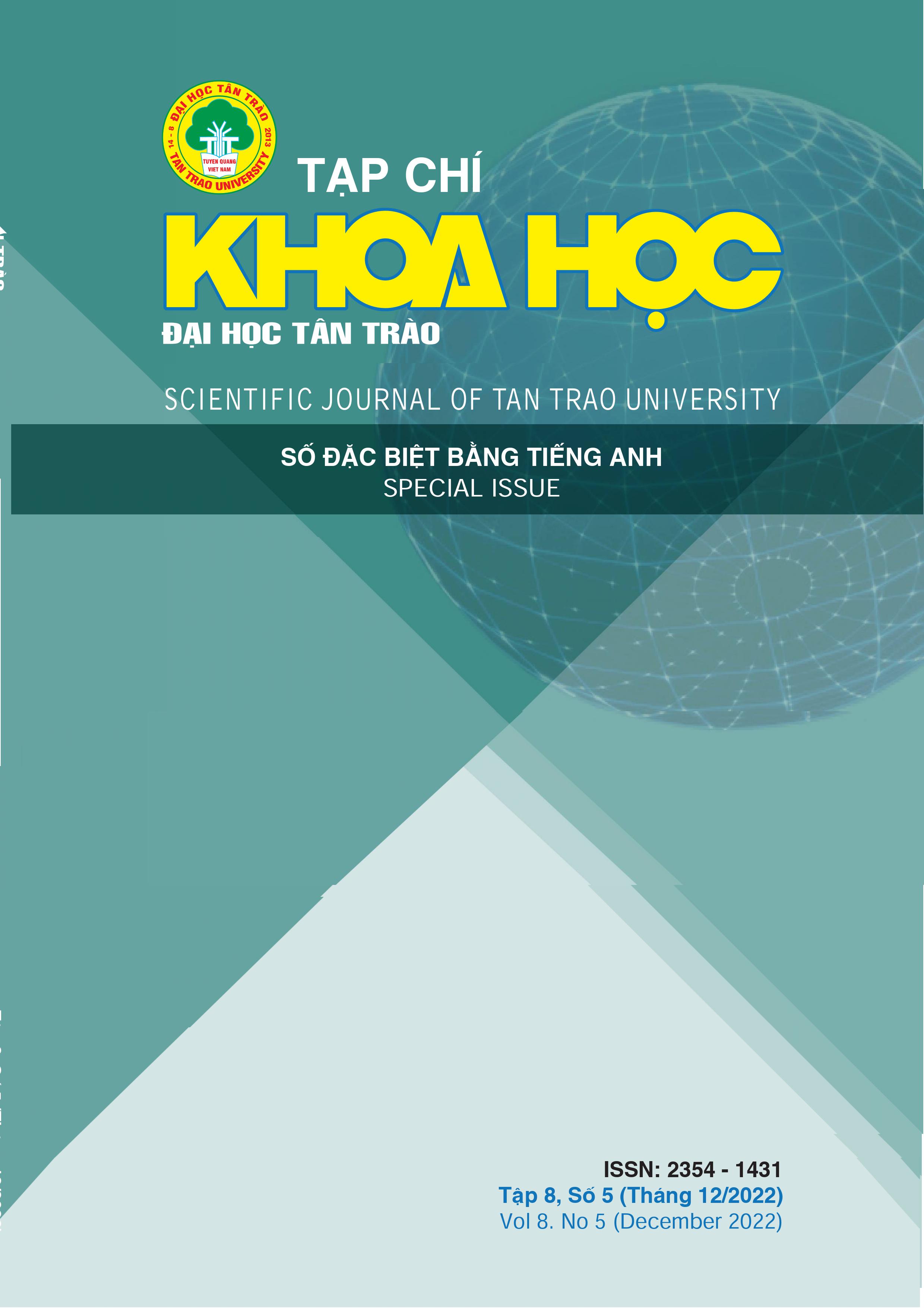PULLBACK ATTRACTORS FOR A NON-AUTONOMOUS SEMILINEAR STRONGLY DEGENERATE PARABOLIC EQUATION
DOI:
https://doi.org/10.51453/2354-1431/2022/840Tóm tắt
In this paper, using the asymptotic a priori estimate method, we prove the existence of pullback attractors for a non-autonomous semilinear strongly degenerate parabolic equation in an arbitrary domain, without restriction on the growth order of the polynomial type non-linearity and with a suitable exponential growth of the external force. The obtained results improve some recent ones for the non-autonomous reaction–diffusion equations.
Tải xuống
Tài liệu tham khảo
[1] F. Boyer and P. Fabrie, Mathematical Tools for the Study of the Incompressible Navier-Stokes Equations and Related Models, Applied Mathematical Sciences, vol. 183. Springer, New York (2013).
[2] B. Franchi and E. Lanconelli, Une m†trique associ†e une classe d’op†rateurs elliptiques d†g†n†r†s, (French) [A metric associated with a class of degenerate elliptic operators] Conference on linear partial and pseudodifferential operators (Torino, 1982). Rend. Sem. Mat. Univ. Politec. Torino 1983, Special Issue (1984), 105-114.
[3] P.G. Geredeli, On the existence of regular global attractor for p−Laplacian evolution equation, Appl. Math. Optim, 71 (2015), 517- 532.
[4] P.G. Geredeli and A. Khanmamedov, Longtime dynamics of the parabolic p−Laplacian equation, Commun. Pure Appl. Anal, 12 (2013), 735-754.
[5] A.E. Kogoj and E. Lancenolli, On semilinear ∆λ-Laplace equation, Nonlinear Anal. 75 (2012), 4637-4649.
[6] A.E. Kogoj and S. Sonner: Attractors for a class of semi-linear degenerate parabolic equations, J. Evol. Equ. 13 (2013), 675-691.
[7] A.E. Kogoj and S. Sonner, Attractors met Xelliptic operators. J. Math. Anal. Appl. 420 (2014), 407-434.
[8] D. Li and C. Sun, Attractors for a class of semi-linear degenerate parabolic equations with critical exponent. J. Evol. Equ. 16 (2016), 997-1015.
[9] Y. Li and C.K. Zhong, Pullback attractors for the norm-to-weak continuous process and application to the onautonomous reactiondiffusion equations, Appl. Math. Comp. 190 (2007), 1020-1029.
[10] Y. Li, S. Wang and H. Wu, Pullback attractors for non-autonomous reaction-diffusion equations in Lp, Appl. Math. Comp. 207 (2009), 373-379.
[11] G. Lukaszewicz, On pullback attractors in H1 0(Ω) for nonautonomous reaction-diffusion equations, Int. J. Bifurcation Chaos Appl. Sci. Eng. 20 (2010), 2637-2644.
[12] G. Lukaszewicz, On pullback attractors in Lp for nonautonomous reaction-diffusion equations, Nonlinear Anal. 73 (2010), 350-357.
[13] D.T. Luyen and N.M. Tri, Existence of solutions to boundary-value problems for semilinear ∆ γdifferential equations, Math. Notes 97 (2015), 73-84.
[14] D.T. Quyet, L.T. Thuy and N.X. Tu, Semilinear strongly degenerate parabolic equations with a new class of onlinearities, Vietnam J. Math. 45 (2017), 507-517.
[15] J.C. Robinson, Infinite-Dimensional Dynamical Systems, Cambridge University Press, Cambridge, 2001.
[16] M.X. Thao, On the global attractor for a semilinear strongly degenerate parabolic equation, Acta Math. Vietnam. 41 (2016), 283-297.
[17] P.T. Thuy and N.M. Tri, Long-time behavior of solutions to semilinear parabolic equations involving strongly degenerate elliptic differential operators. Nonlinear Differential Equations Appl. 20 (2013), 1213-1224.
[18] N. X. Tu (2021), Global attractor for a semilinear strongly degenerate parabolic equation with exponential nonlinearity in unbounded domains, Commun. Korean Math. Soc. 37 (2022), No.2, pp. 423-443.
[19] B. Wang and R. Jones, Asymptotic behavior of a class of non-autonomous degenerate parabolic equations, Nonlinear Anal. 72 (2010), 3887-3902.
[20] Y. Wang and C.K. Zhong, On the existence of pullback attractors for non-autonomous reaction-diffusion equations, Dyn. Syst. 23 (2008), 1-16.
Tải xuống
Đã Xuất bản
Cách trích dẫn
Số
Chuyên mục
Giấy phép

Tác phẩm này được cấp phép theo Giấy phép Quốc tế Creative Commons Attribution-ShareAlike 4.0 .
Bài báo được xuất bản ở Tạp chí Khoa học Đại học Tân Trào được cấp phép theo giấy phép Ghi công - Chia sẻ tương tự 4.0 Quốc tế (CC BY-SA). Theo đó, các tác giả khác có thể sao chép, chuyển đổi hay phân phối lại các bài báo này với mục đích hợp pháp trên mọi phương tiện, với điều kiện họ trích dẫn tác giả, Tạp chí Khoa học Đại học Tân Trào và đường link đến bản quyền; nêu rõ các thay đổi đã thực hiện và các nghiên cứu đăng lại được tiến hành theo cùng một bản quyền.
Bản quyền bài báo thuộc về các tác giả, không hạn chế số lượng. Tạp chí Khoa học Tân Trào được cấp giấy phép không độc quyền để xuất bản bài báo với tư cách nhà xuất bản nguồn, kèm theo quyền thương mại để in các bài báo cung cấp cho các thư viện và cá nhân.
Mặc dù các điều khoản của giấy phép CC BY-SA không dành cho các tác giả (với tư cách là người giữ bản quyền của bài báo, họ không bị hạn chế về quyền hạn), khi gửi bài tới Tạp chí Khoa học Đại học Tân Trào, tác giả cần đáp ứng quyền của độc giả, và cần cấp quyền cho bên thứ 3 sử dụng bài báo của họ trong phạm vi của giấy phép.


